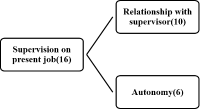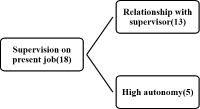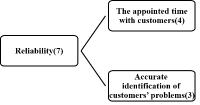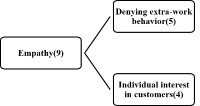PURPOSE The purpose of this study was to explore violence in the Korean sports world and examine the reality of sports violence in the past and present by reflecting the voices of the field and academia through an in-depth analysis. METHODS First, through a systematic literature analysis, the essential problems of sports violence that have been discussed in academia were explored. Next, based on this, perception was explored by applying a multi-case study method to an in-depth analysis of the opinions of experts in academia and the field. Finally, by deriving the research results and discussing them, implications for this study were provided. RESULTS First, the essential problem of sports ethics was the change in sports ethics perception that was different from the sports ethics problem caused by the diversification of victoryism. Second, the essential problems of sports violence were ethics and sports ethics in society with different standards, and the unaltered perception and culture of sports ethics. Third, the problems and causes of sports violence were institutional changes and practical limitations of physical violence, control of the possibility of violence, insensitive verbal violence, cyber violence as a new form violence due to changes in the times, and rationalizations of bystanders. CONCLUSIONS This study is expected to serve as a catalyst for the field and academia by exploring the phenomenon of sports violence in more depth through the problems of violence by type and its causes according to the changing times.
PURPOSE This study aims to analyze the competitive advantages of Japanese and South Korean national football teams using the value, rarity, imitability, and organization (VRIO) model. Based on the results, it proposes strategies for the development of South Korean football. METHODS The research methodology is a combination of literature review, case study, and semi-structured interviews with football experts. RESULTS The Japanese football system meets all criteria of the VRIO model through its systematic youth development system, data-driven strategies, and organizational linkage between clubs and the national team, which has led to consistent performance in international tournaments. In contrast, while South Korean football possesses excellent individual player resources, it fails to fully meet the criteria of the VRIO due to a regional imbalance in the youth system, insufficient use of data, and lack of cooperation between clubs and the national team. CONCLUSIONS The interview data indicate that strengthening the youth system, adopting a data-driven approach, and improving the collaborative structure between clubs and the national team are necessary components of the development of South Korean football. This study provides specific directions for the long-term and sustainable development of South Korean football by analyzing the strategic competitiveness of national football teams in other countries using the VRIO model.

[Purpose] This study was designed to explore Yuna Kim’s psychological strengths and the contextual factors, which led her to obtain the gold medal and the reflection of peak performance and preparation at the 2010 Olympics. It was hoped that by sharing the experience of one of the top athletes, other athletes would learn from her and prepare themselves better for Olympics in the future. [Methods] A case study method was applied with a qualitative approach. To obtain the purpose of the study, five in-depth interview sessions including introductory and member checking procedures were conducted. The interviews were recoded and transcribed verbatim, and content analysis was used to inductively analyse the data. [Results] The four general dimensions that were discovered in the results included Social-external Factors, Personal Traits, Coping Strategies, and Peak Performance. The social-external factors consisted of social support and attached/detached relationships while personal traits were personality traits, confidence and motivation. Coping strategies to overcome external and situational pressures were detached coping and resilience whereas peak performance was reflected on flow and the state of being mindful. [Conclusion] In conclusion, Yuna Kim’s strength was parallel with the previous research on the top athletes and other findings such as adaptive perfectionism and a sense of rivalry in the research were discussed.


Purpose This study attempted to investigate the difference on job satisfaction and service quality between non-regular and regular workers in commercial sports facilities. Methods With the purpose of the study, the purposive sampling as the non-probability sampling method was used to intentionally select the representative cases. We conducted through utilizing in-depth interviews with 6 non-regular and regular workers, respectively, who have worked for more than a year at total commercial sports facilities holding more than 3 programs with more than 500 memberships. This study aimed to explain real phenomena as much as possible by utilizing NVivo 11, one of qualitative research method programs, on the basis of raw data. Results In conclusion, non-regular and regular employment types in commercial sports facilities did not affect service quality provided for customers. However, it was derived that there was a slight difference between regular and non-regular workers on job satisfaction. Conclusion It is necessary to improve the wage and compensation system for regular workers as well as the labor policy to improve treatment of the wage according to the qualification of non-regular workers in commercial sports facilities. In spite of the instability of non-regular workers, the effort of converting into regular workers would evoke organizational commitment, loyalty, and attachment of non-regular workers, when properly acknowledged.

























There are expanding the base of amateur baseball with diverse factors and corporations are getting more interested in making opportunities to build relationships with customers by using this phenomenon. However, the previous research did not focus on examine practical effectiveness for relationship marketing methods as the strategy of the building relationship which was applied to sport events from diverse corporations. Therefore, the purpose of this study is to examine the practical effectiveness of the relationship marketing methods and the influencing process of the relationship marketing strategy applied to the amateur baseball. 150 players who took part in the amateur baseball tournament hosted by the on-line shopping mall company were selected for research samples with random assignment. To examine the practical effectiveness, 136 players' survey responses out of 150 responses were used for research data. For hypotheses testing, this study applied PLS structural equation model. This study presented that perceived face to face and listen as relationship marketing methods were significantly positive influenced on perceived relationship quality. In addition, perceived relationship advertising as relationship marketing methods were significantly positive influenced on perceived purchase intention. Moreover, perceived relationship quality was significantly positive influenced on perceived purchase intention. In the case of mediating effect with considering relationship quality, there was partial mediating effect for relationship advertising and face to face, and there was complete mediating effect for listen.

PURPOSE This study identified a company sports club’s dual characteristics— both for leisure activity and as an extension of work—to provide comprehensive interpretation and understanding of such clubs. METHODS A qualitative case study design was employed, incorporating in-depth interviews, nonparticipant observation, and supplementary data collection from 25 office workers who had participated in an in-house sports club for at least one year. RESULTS Participants reported a wide spectrum of motivations, from voluntary motives such as stress relief and health improvement to more obligatory or organizationally driven motives, including pressure from supervisors or colleagues and expectations related to performance evaluations. The club offered both team sports—which fostered teamwork and a sense of belonging—and individual sports—which offered personal development opportunities. However, some participants experienced blurring of work–leisure boundaries and reemergence of hierarchical organizational culture, leading to conflict and fatigue. CONCLUSIONS Overall, Although company sports clubs have become a welfare program that provides employees with opportunities for leisure and self-development and promote inter-departmental communication and collaboration, they also carry the latent risk of imposing additional burdens and pressures on employees. These findings underscore the need for refined operational strategies and institutional improvements to mitigate negative outcomes and maximize such programs’ original intent.
PURPOSE This study aimed to explore ways to utilize augmented reality (AR) in school sports and leisure by examining the case of an elementary school sports club using augmented reality-based e-sports. METHODS A self-study approach and Eisner's(1995) educational criticism were utilized. Data including photos, videos, literature, and memory boxes related to the elementary school AR sports club were collected weekly during the school semesters from March 2023 to January 2024, spanning a total of 30 weeks. The data were analyzed following the stages of analysis by Elo & Kyngäs(2007). RESULTS Augmented reality can act as a personalized exercise coach by visualizing physical activity information. Through posture and movement analysis, education on physical strength and expression can be provided that is linked to home; it can also expand the range of sports experiences and create a new sports culture. In order to effectively utilize AR, edtech field experts must be trained, and content must be developed through cooperation between companies and schools. The educational effectiveness of the content must be verified and the management system must be inspected, and public facilities utilizing edtech must be expanded. CONCLUSIONS AR has endless development potential in school sports and leisure, but these will require active interest and support from educational authorities.
PURPOSE This study aimed to examine the associations between accelerometer-measured physical activity and both cardiometabolic disease risk factors and metabolic syndrome in Korean adults. METHODS We performed a retrospective cohort study with age-sex matched case-control using data from the 2014-2016 Korea National Health and Nutrition Examination Survey, which was administered to South Korean adults (n=320). Individuals were categorized into quartiles based on accelerometer-measured moderate-to-vigorous physical activity (MVPA). Demographic and physical characteristics, waist circumference, visceral adiposity index, blood pressure, lipid profiles, and TG/HDL-C were observed. The associations between MVPA status and cardiometabolic disease risk factors as well as metabolic syndrome were determined using multiple logistic regression. RESULTS For the waist circumference, SBP, DBP, MBP, visceral adiposity, triglyceride, and a surrogate estimate of insulin resistance, the Q1 and Q2 groups had higher means compared with the Q3 and Q4 groups. HDL-C was higher in the Q3 and Q4 groups compared to the Q1 and Q2 groups. Odds ratios for cardiometabolic disease risk factors and metabolic syndrome decreased in a curvilinear manner with the increasing quartile of MVPA. CONCLUSIONS Adults with higher MVPA participation were strongly associated with cardiometabolic disease risk factors and metabolic syndrome.
This study aimed to explore elite taekwondo competitors’ imagery strategies . The study participants were 10 elite taekwondo athletes, who worked for S business team. Data were collected through open-ended questionnaires and in-depth interviews. The data were collected based on Gould et al. (1992)’s proposed qualitative research method. The inductive content analysis of the imagery was conducted following the imagery type of Paivio (1985) and Suinn (1996). The law data and case of imagery were separated by three specialists. The results were as follows. First, elite taekwondo competitors generally used the types of imagery proposed by Paivio (1985) and Suinn (1996). In particular, imagery of anxiety regulation appeared with the highest frequency among factors and ordered imagery of motivation, imagery of skills, imagery of mental skills, and imagery of competition. Second, elite taekwondo competitors mainly used imagery of skills before two weeks for competition. They mainly used imagery of anxiety regulation the day before a competition. They used imagery of anxiety regulation and imagery of motivation on the day of a competition. They used imagery of motivation after the competition. In sum, elite taekwondo competitors used individual strategies in terms of imagery in order to ensure effective training and peak performance in competition. The strategy of imagery was applied differently based on the juncture of the competition.
Purpose This study focuses on accessibility to sports facilities that can be classified into structural leisure constraints. The purpose of this study is to explore exploratory analysis of the types of reservation methods and payment methods, which are the initial stages of consuming sports facilities, and to explore inconveniences that consumers feel when making reservations. Methods A quantitative research method was used to derive the results, and data were collected through a questionnaire survey method. The collected data were analyzed by technical statistics focusing on the reservation method, payment method, and inconvenience during reservation. Results As a result, it was found that the main types of reservation methods and payment methods were homepage, homepage/telephone, telephone, homepage/app, and account transfer and card payment, respectively. In the case of inconvenience, the procedure was complicated, address and location, and reservation method were identified as the main matters. Conclusions Efforts must be made to secure both the convenience and publicity of accessibility at an early stage, such as reservation methods and payment methods for sports facilities.